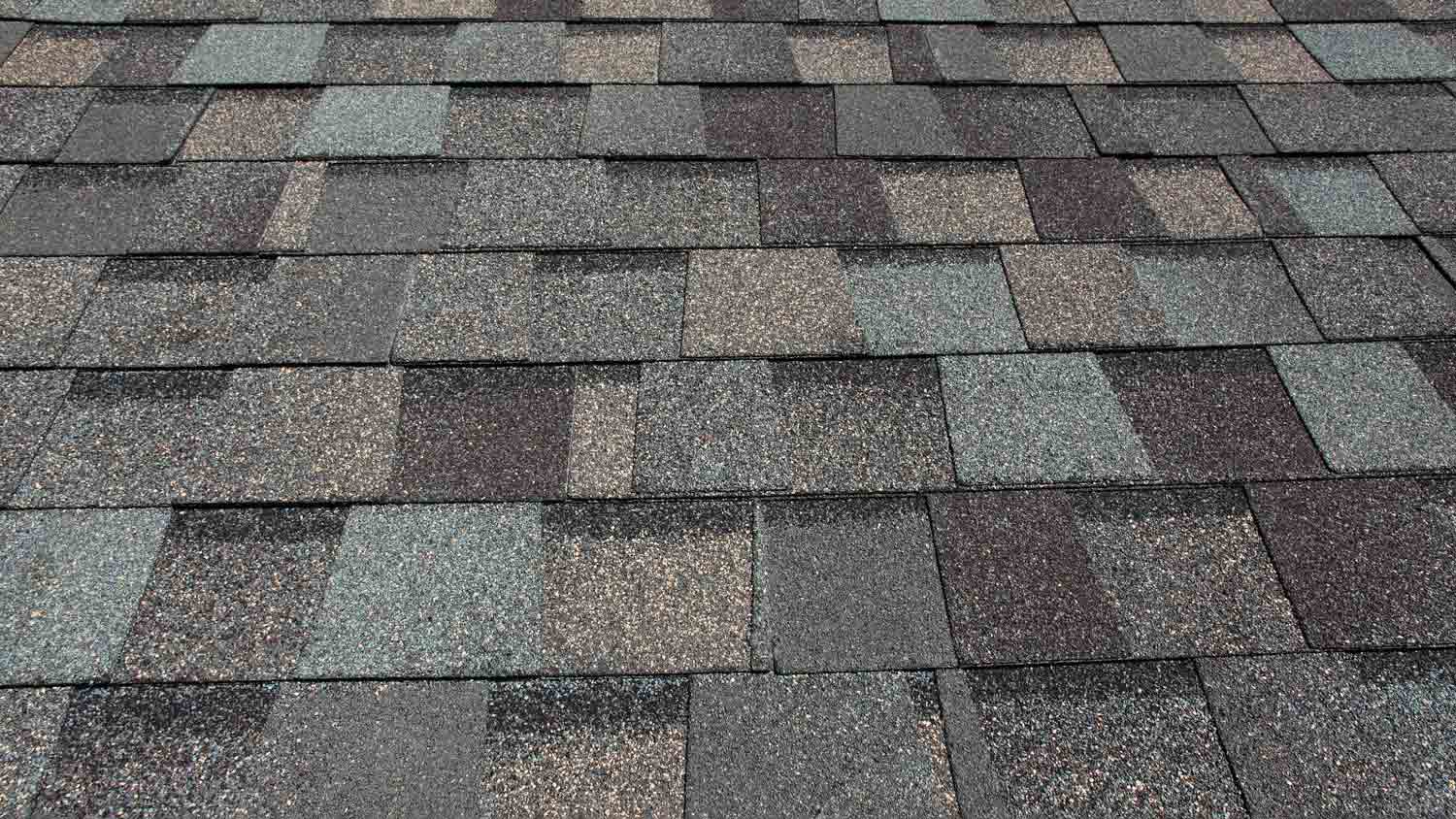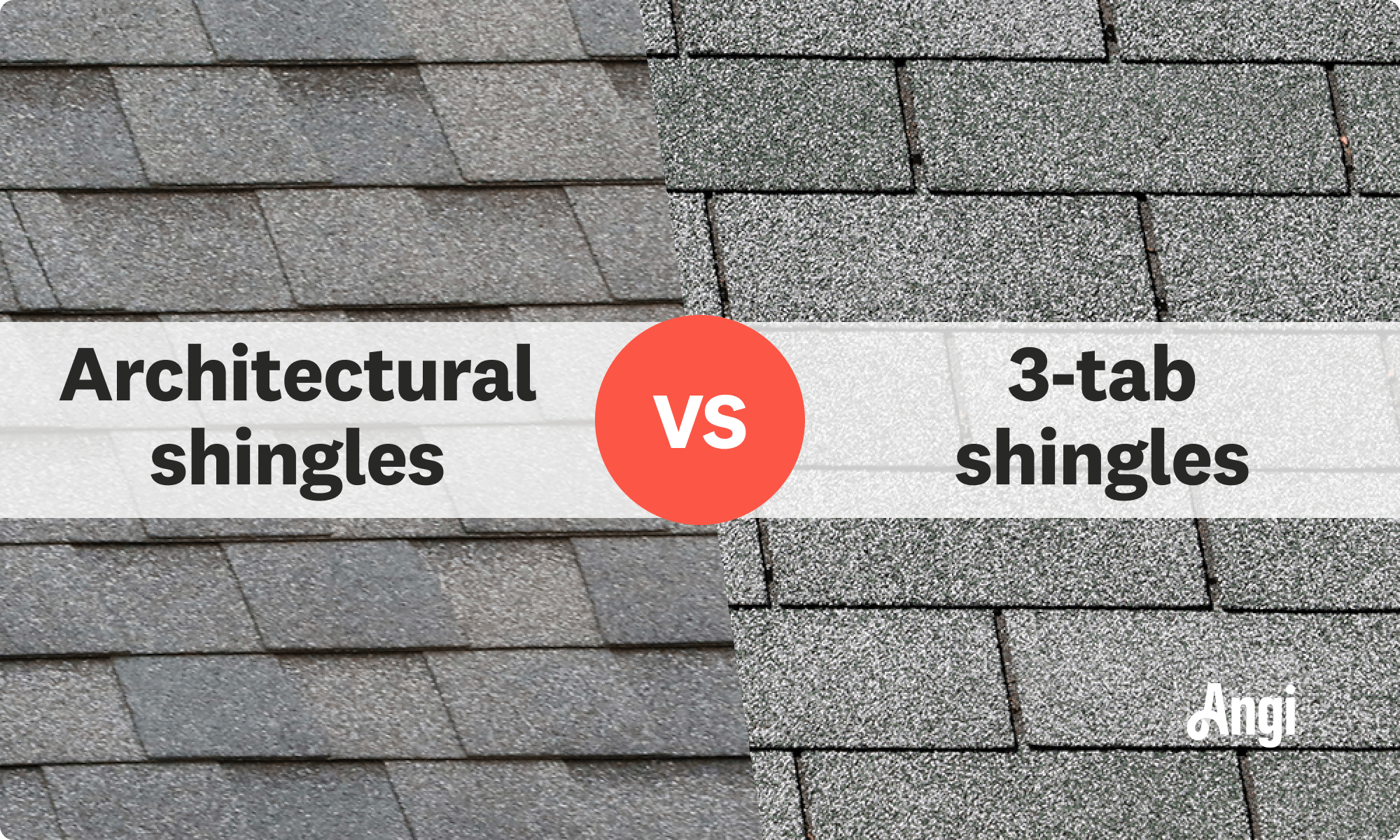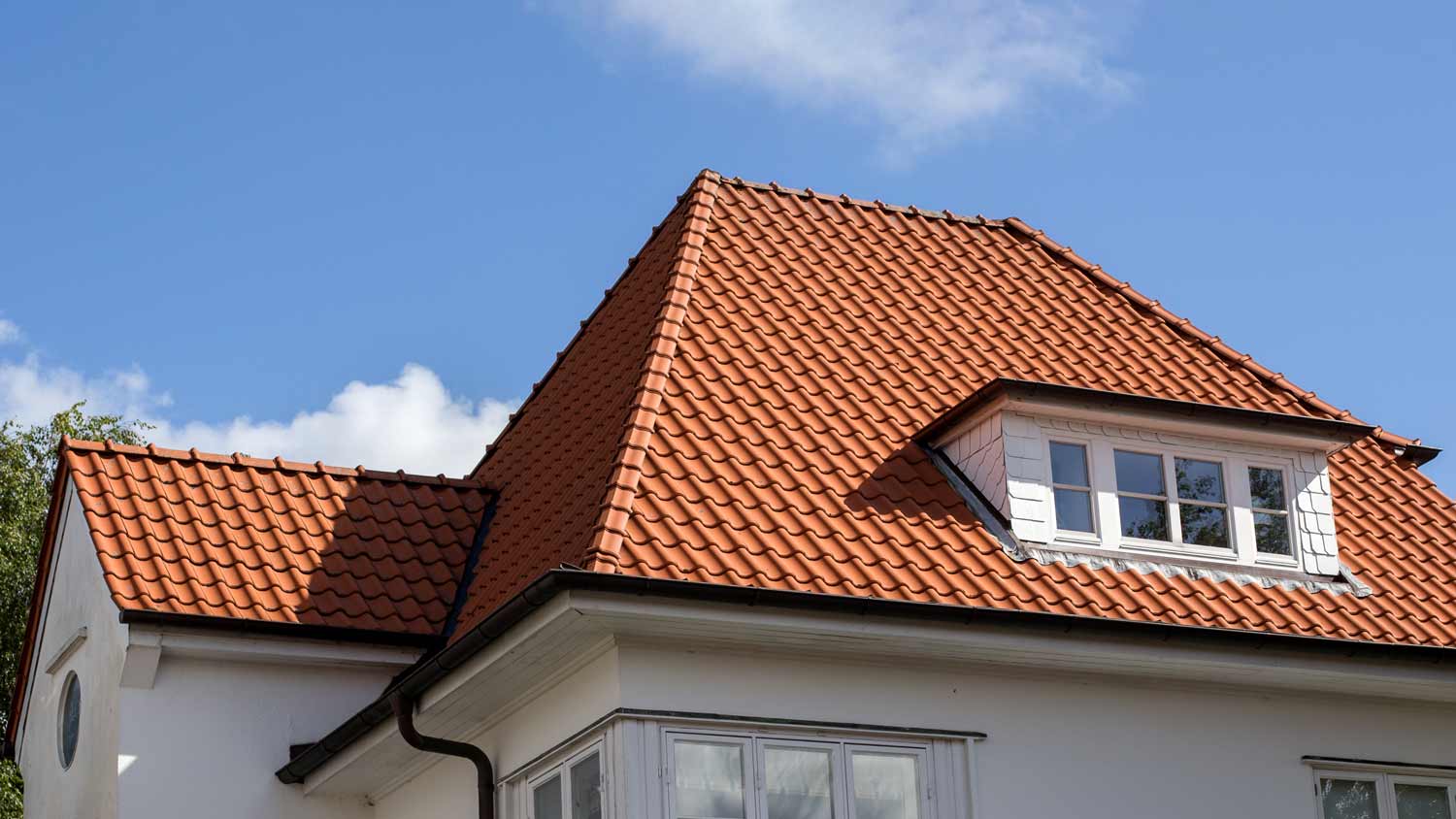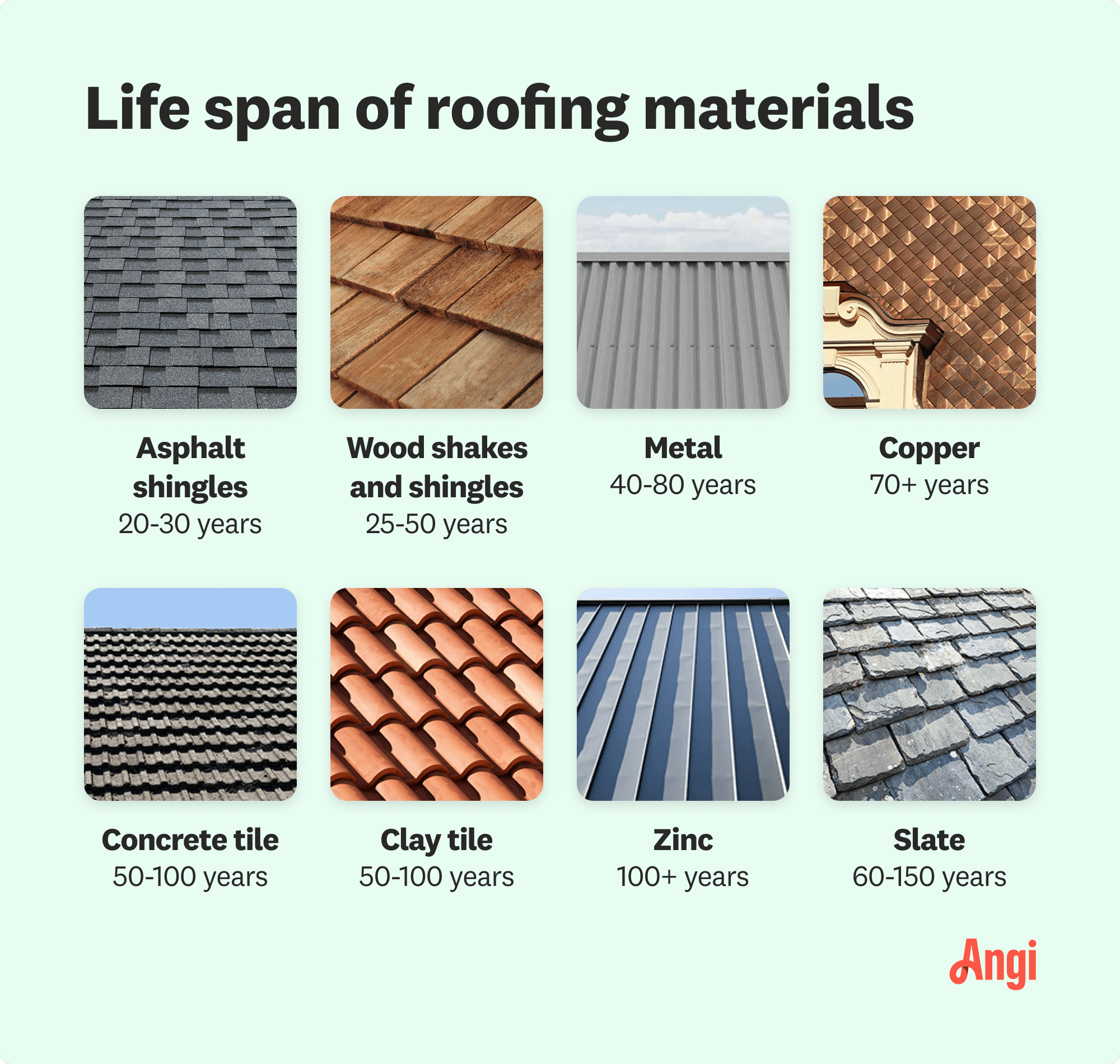Shingle Roof vs. Tile Roof: Pros, Cons, and Costs
Shingles and tiles go head-to-head


Shingled roofs are less expensive to install and maintain.
Tiled roofs offer more material choices and last much longer.
Asphalt shingles are easier to work with due to their sticky texture.
On average, shingle roofs cost $10,500, and tile roofs cost $17,500.
Whether replacing an aging roof or picking a new one for your home construction, the roof materials and styles you choose can make a huge impact. Different materials will match different houses, and certain homeowners may consider a price premium for custom materials a good investment. Learn the main differences when it comes to shingle roofs versus tile roofs, including their lifespan, strengths, drawbacks, and price points.
Shingle Roofs vs. Tile Roofs: Key Differences
When comparing shingle roofs and tile roofs, you need to factor in budget, aesthetics, and lifespans. Not every homeowner wants a customized roof, while others may appreciate the uniqueness it adds to their home. Shingle roofs are less expensive but need to be replaced more often. Tile roofs come in a variety of materials, and last decades longer.
What Is a Shingle Roof?

A shingle roof consists of shingles—usually made of asphalt—placed one over another, overlapping individually. Most homes in North America have asphalt shingled roofs because they’re fast to install, easy to maintain, and last a decent amount of time. When you think of a roof on a house, chances are you picture a shingled roof.
| Pros | Cons |
|---|---|
| Low cost | Require maintenance |
| Easy to replace or repair | Don’t insulate wel |
| Good warranties | Environmentally unfriendly |
| Straightforward installation | Shorter lifespan |
Best for:
Homeowners in need of a budget-friendly roof
Those who care less about aesthetics and customization
People looking for less expensive repairs and installation
Pros of Shingle Roofs
The biggest pro of shingle roofs, by far, is their cost. They will typically already be installed on homes if you’re purchasing a preexisting property, and almost all roof professionals will be skilled at their installation and repair, making any contractor work less expensive due to competition. They also come in two style—architectural and three-tab—which offers a little variety.

Cons of Shingle Roofs
Shingle roofs are not as hardy as tile options, don’t offer much insulation, and will need to be repaired or replaced at more frequent intervals. Asphalt is a petroleum byproduct, so shingle roofs will be less environmentally friendly than stone or clay roofs. Finally, asphalt tiles aren’t much to look at—most people won’t notice them much, if at all, as they certainly don’t draw the eye.
What Is a Tile Roof?

A tile roof is a roof with overlapping tile designs to keep out all forms of weather. Tile roofs are actually much older than shingled roofs, as examples of tile roofs date back tens of thousands of years. This time-tested style of roofing still exists today, although it’s not as commonly installed, and certainly not as part of a subdivision or large suburban build.
Tile roofs are a custom addition that a homeowner usually decides to install versus the typical shingle roofing of most homes. Roof tiles can be made of concrete, wood, metal, clay, stone, terracotta, and other materials.
| Pros | Cons |
|---|---|
| Long lifespan | Much heavier than shingle |
| Aesthetics | Higher cost |
| Resistance to pests | More difficult to repair |
| Highly durable | More complex installation |
Best for:
Homeowners with high budgets for both installation and repair
People looking for a more customized, upscale look
Those who want a long-lasting and weather-resistant roof
Pros of Tile Roofs
Tile roofs simply look excellent, last a long time, and are extremely resistant to weather events and pest infestations. Even high winds can rip shingles off, but it requires much stronger forces to dislodge a tile roof. Due to their options, premium materials, and curb appeal, tile is commonly seen on higher-end homes, as it adds a touch of elegance to an otherwise overlooked aspect of the home—the roof.
Cons of Tile Roofs
While there are certainly benefits to tile roofs, they aren’t without their drawbacks. Most tile materials are significantly heavier than shingles, and they’re harder to work on as well since they aren’t as tacky as the asphalt used on shingles.
Tile roofs are not only more expensive to install, but they’re more expensive to repair or replace. While you can easily get up on an asphalt roof and replace a few shingles, replacing tile sometimes involves removing whole sections, all while working on a slippery surface.

Shingle Roofs vs. Tile Roofs
As you can see, there are pros and cons to both shingles and tiles. If you’ve read this article and are still on the fence, talk to a local roofing pro who can check out your house and give a more informed opinion. That being said, the direct comparisons below can help nudge you in one direction.
Appearance: Tile
This is the easiest one to call—tile roofs look much better than shingle roofs. Upgrading to a tile roof can seriously impact the appearance of your home for the better, considering how many styles and materials you can choose from to match the color and general vibe of your home.
Options and Customizations: Tile
Asphalt shingles most often come in three colors—gray, black, and brown—so there’s not much room for customization. Tile comes in many materials, allowing you to not just customize your roof’s appearance, but the whole attitude of your home. For example, terracotta tiles bring a Tuscan touch to a home, while metal tiles add an industrial effect. Asphalt shingles don’t allow for this in any way.
Durability: Tile
Tile roofs last longer, as roofing tile materials are more resistant to all forms of weather and decay than shingles. Roof tiles come in many different materials that influence durability. For example, clay, wood, and terracotta tiles can last a seriously long time but are more prone to cracking than, say, steel tiles. There are many choices, and ultimately, which material you choose will depend on your budget and desired aesthetic.
Price: Shingle
This is a tough one to call because the initial installation of shingles will always be less expensive than tile. However, if you consider cost per year of use, tile may come out ahead due to its much longer lifespan. That being said, since most homeowners will only replace a roof once, shingles end up being the most cost-effective choice. On average, shingle roofs cost $10,500, while a tile roof costs an average of $17,500.
Ease of Repair: Shingle
Shingle repair is relatively simple but usually requires a pro due to the safety aspect. Improperly fixed shingles (or tiles) can lead to roof leaks, which can cause serious damage to your home. Shingles can be individually replaced without much sweat, which also makes them cheaper to replace and repair.
Ease of Installation: Shingle
Roofing companies can crank out a shingle roof in just a few days. They don’t require complicated supporting structures like some tile roofs can. The shingles are standardized, easy to cut, and easy to nail to the roof. In fact, many companies can fully shingle a roof in just a day or two. Tile is heavier, so it requires additional roofing support. Due to its weight, it's also slower to work with, and finally, since the tile is slippery, workers can’t work as fast due to safety concerns.
Maintenance: Tie
Tile roofs are easy to spray down and are pretty clean afterward. However, the same applies to asphalt shingles, so this is a tie. You should be checking both roof types a few times a year for damaged pieces, sagging, and leaking. In most mild conditions, both roof types should require minimal maintenance.
Length of Life: Tile
Tile roofs last, on average, 50 years or more. Certain materials like stainless steel and clay can last even longer. When you compare that to shingles’ average lifespan of 20 to 30 years, tile is the clear winner. Tile is more resistant to nearly everything that ages materials, so if you have the budget and don’t want to repair or replace your roof for many decades, go with tile.
ROI and/or Resale Value: Tie
A new roof, regardless of what materials you use, will have a fairly high return on investment (ROI). You can think of it like a used car—the more mileage you put on, the less value it has, and the lower your ROI. New roofs ROIs are around 50% of your investment on average. The percentage that a homeowner can recoup in a sale isn’t as high as other projects like a kitchen remodel, so home flippers usually won’t replace the roof unless it’s in pretty bad shape.





- Roofers
- Metal Roofing
- Roof Repair
- Roof Inspection
- Vinyl Siding Repair Contractors
- Flat Roofing Companies
- Commercial Roofing
- Emergency Roofing Companies
- Leaky Roof Repair
- Metal Roof Repair
- Business Roof Repair
- Flat Roof Repair
- Tile Roof Repair
- Slate Roofers
- Rubber Roofers
- Roofing & Siding
- Metal Roof Installation
- Affordable Roofing
- Roof Sealing
- Attic Ventilation Contractors










